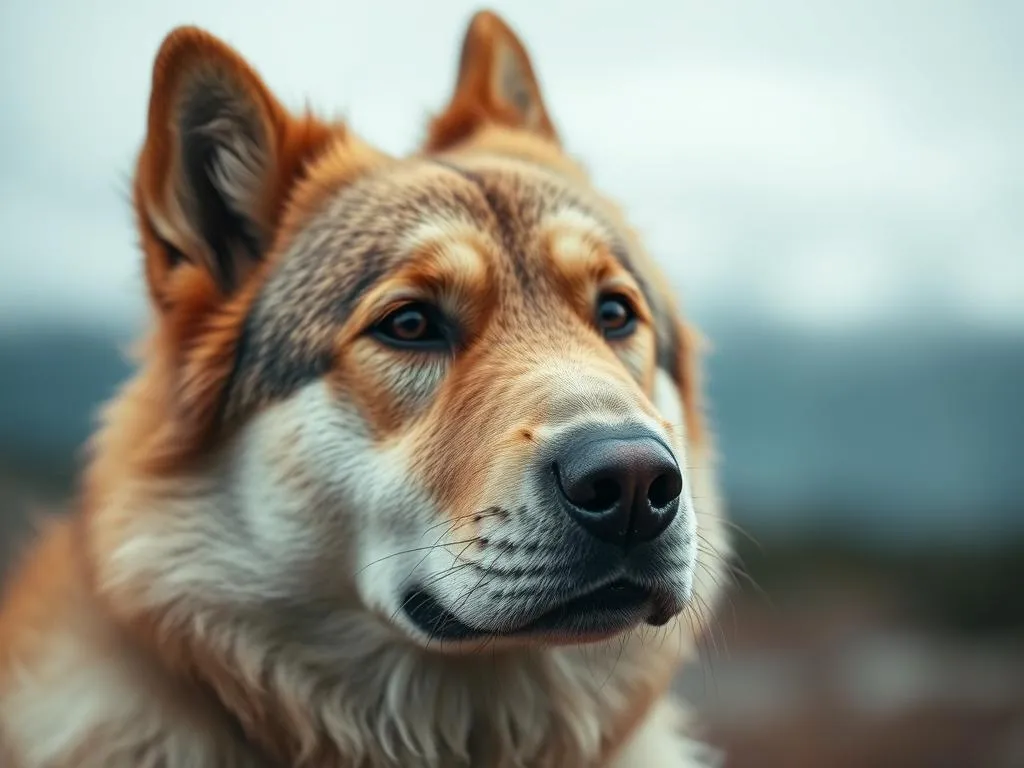
Introduction
Dog breeds play an essential role in our lives, influencing everything from companionship to working capabilities. Among the vast array of breeds, the Greenland Dog stands out as a distinctive and resilient breed with a rich history. This article delves into the various facets of the Greenland Dog, from its historical roots and physical characteristics to its care requirements and suitability as a pet.
Understanding Dog Breeds
Definition of Dog Breeds
A dog breed is essentially a specific group of domestic dogs, selectively bred over time to develop particular traits, behaviors, and appearances. Each breed exhibits unique characteristics, such as size, coat type, and temperament, which are crucial for potential owners to understand. When choosing a dog, recognizing these traits is vital, as they can significantly impact the dog’s compatibility with your lifestyle.
Why Dog Breeds Matter
The significance of dog breeds extends beyond mere looks. Breeds influence behavior, temperament, and even health. For instance, some breeds are more energetic and require extensive exercise, while others may be more laid-back. Understanding these nuances helps prospective dog owners select a breed that aligns with their lifestyle and environment, ensuring a harmonious relationship.
Overview of the Greenland Dog
History of the Greenland Dog
The Greenland Dog has a storied history that dates back thousands of years. This breed is deeply rooted in the Arctic regions of Greenland, where it was developed by the Inuit people. Originally bred as a working dog, the Greenland Dog played a crucial role in hunting and pulling sleds, showcasing its endurance and strength. Its ability to thrive in harsh Arctic conditions made it an invaluable companion for survival in extreme environments.
Physical Characteristics
The Greenland Dog is a robust and powerful breed. Males typically weigh between 85 to 95 pounds, while females range from 65 to 75 pounds. Their distinctive double coat is thick and weather-resistant, designed to protect them from frigid temperatures. Common coat colors include white, gray, black, and various shades of brown, often with striking markings.
One of the breed’s hallmark features is its erect ears and bushy tail, which curls over its back. These physical traits not only contribute to its majestic appearance but also aid in its functionality as a working dog.
Temperament and Behavior
The Greenland Dog is known for its independent yet loyal nature. While it can be reserved around strangers, it is affectionate and protective of its family. This breed possesses strong working instincts, making it suitable for various tasks beyond companionship. Socialization is crucial from a young age to ensure balanced behavior, as these dogs can be territorial and may exhibit strong prey drive.
Care and Maintenance of Greenland Dogs
Nutritional Needs
Feeding a Greenland Dog requires careful consideration of its nutritional needs. A high-quality diet rich in protein is essential to support its active lifestyle and maintain healthy body weight. It’s advisable to split their meals into two servings per day to prevent bloating and ensure optimal digestion. Always consult with a veterinarian to tailor the diet to your dog’s specific health requirements and activity level.
Grooming Requirements
The Greenland Dog has a thick double coat that requires regular grooming, especially during shedding seasons. Brushing at least once a week helps manage loose fur and reduces matting. While they generally do not require frequent baths, it’s essential to maintain their hygiene, particularly after outdoor activities. Regular grooming not only keeps their coat healthy but also strengthens the bond between you and your dog.
Exercise and Activity Levels
Being an active breed, Greenland Dogs require ample exercise to stay healthy and happy. Daily walks, running, or engaging in dog sports are excellent ways to meet their activity needs. Additionally, mental stimulation is vital; puzzle toys and training sessions can help keep their minds sharp. Social interaction with other dogs is equally important to foster good behavior and prevent boredom.
Training the Greenland Dog
Basic Training Techniques
Training a Greenland Dog can be rewarding yet challenging. Early socialization is crucial to ensure they grow into well-rounded adults. Positive reinforcement methods, such as treats and praise, work best with this breed. Basic commands like sit, stay, and come are essential for safety and communication.
Challenges in Training
While Greenland Dogs are intelligent, they can also be stubborn. Common behavioral issues include excessive barking and digging, often stemming from boredom or lack of exercise. Consistent training, patience, and clear communication can help mitigate these challenges. Building a strong relationship through trust and respect is key to successful training.
Health Considerations
Common Health Issues
Like all breeds, the Greenland Dog is susceptible to certain health issues. Genetic predispositions include hip dysplasia and certain eye conditions. Regular health screenings and veterinary check-ups are essential to catch any potential problems early. Maintaining a healthy weight and providing a balanced diet can also contribute to their overall well-being.
Lifespan and Aging
The average lifespan of a Greenland Dog is around 10 to 12 years. As they age, specific care needs may arise, such as joint support and dietary adjustments. Providing senior dogs with comfortable living conditions and regular vet visits can help ensure they enjoy their golden years without discomfort.
Suitability of Greenland Dogs as Pets
Ideal Living Conditions
Greenland Dogs thrive in spacious environments where they can roam and explore. While they can adapt to urban living, they flourish in rural settings with access to open spaces. A fenced yard is ideal, allowing them to exercise freely while remaining safe.
Compatibility with Families and Other Pets
This breed is generally good with children, making them suitable family pets. However, supervision is essential to ensure positive interactions, especially with younger kids. When introducing a Greenland Dog to other pets, early socialization is key. They may have a strong prey drive, so gradual introductions and monitoring are necessary for a harmonious household.
Conclusion
The Greenland Dog is a remarkable breed with unique qualities that make it a fantastic companion for the right owner. With its captivating history, impressive physical characteristics, and endearing temperament, this breed deserves recognition. Responsible ownership, proper training, and understanding of their needs are vital for a fulfilling relationship. If you’re considering adding a dog to your family, the Greenland Dog could be an excellent choice for an active and loving household.









